The “expensive but sellable” grilled fish set menus are over 20,000 yen! New York” is popular despite high prices and deteriorating security, and “Japan” is in a bubble due to the weak yen.
Everything is “cheap” in Japan, while New York City is “expensive” and has strong demand for travel
The number of inbound travelers to Japan has been growing tremendously. In October 2012, the number of inbound travelers to Japan exceeded 30 million*, the fastest ever. This is a 30% increase from the pre-Corona year of 2007. (*Preliminary figures released by the Japan National Tourism Organization)
The reason for this is not only that Japan is an internationally attractive tourist destination, but also the historical “depreciation of the yen. In particular, when visitors from developed countries such as Europe and the United States come to Japan, “everything is cheap. As a result, the market price of hotels in Japan has skyrocketed.
On the other hand, New York City in the U.S. is one of the world’s most popular tourist destinations. The number of tourists who visited the city after the COVID-19 crisis reached 62.2 million last year, close to the pre-COVID-19 record high of 64.8 million, and is expected to increase further to 64.8 million in 2012. Of these, less than 20% are international travelers. Hotels in New York are said to cost on average “over 60,000 yen per night,” and local prices are rising rapidly.
The same is true for the increasing number of travelers, but what is the difference between Japan, where the weak yen attracts travelers, and New York, where travelers continue to arrive despite the high cost of hotels and restaurants? In December 2012, the author, who visited New York for the first time in about 10 years, examined the differences based on the hottest new spots, actual experiences in the area, and other factors.
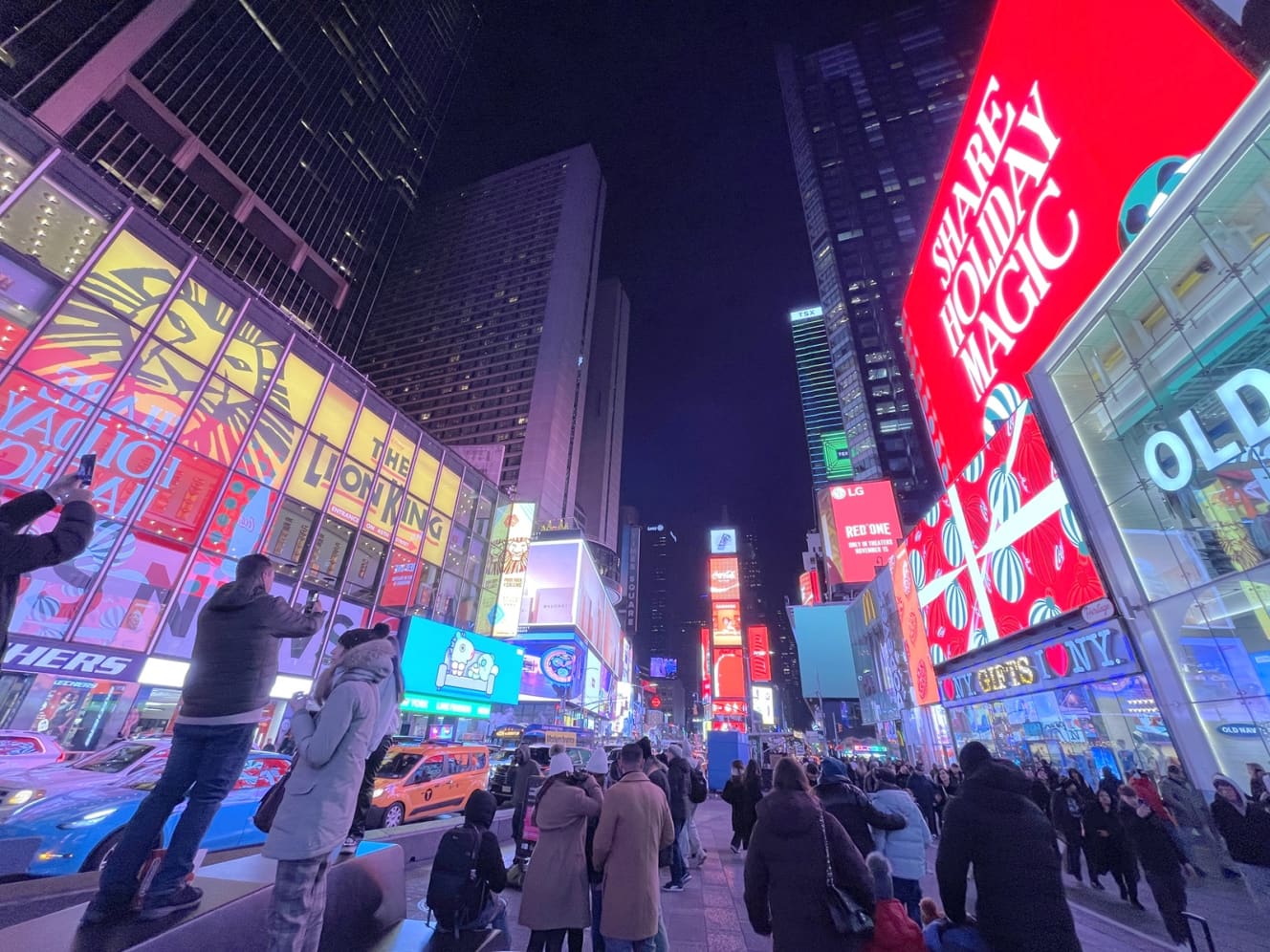
Tickets for the popular observation deck sold out weeks in advance.
The first thing I felt when I visited New York this time was “liveliness. New York has always been on the cutting edge, and new spots are popping up one after another, each time creating a buzz. Especially at night, Rockefeller Center and Fifth Avenue were filled with so many people that it was difficult to move, and the boulevards were jammed with cars and other vehicles all the time.
The 335-meter-high Summit Observation Deck at One Vanderbilt, a skyscraper near Grand Central Station, opened in October 2009. Surrounded by glass and mirrors, it is a novel experience that makes visitors feel as if they are floating in mid-air, and is a popular photo spot.
To visit this summit, I purchased my ticket several weeks in advance on the official website. At that point, the sunset time slot was already sold out. The total ticket price was $67.51, which included the admission fee plus the evening surcharge and the settlement fee. Even though we had already purchased our reservations, the entrance was a long line, and it took about 30 minutes to get through airport-like security checks to reach the observation deck. Indeed, it felt like a theme park, not just a place to enjoy the view.
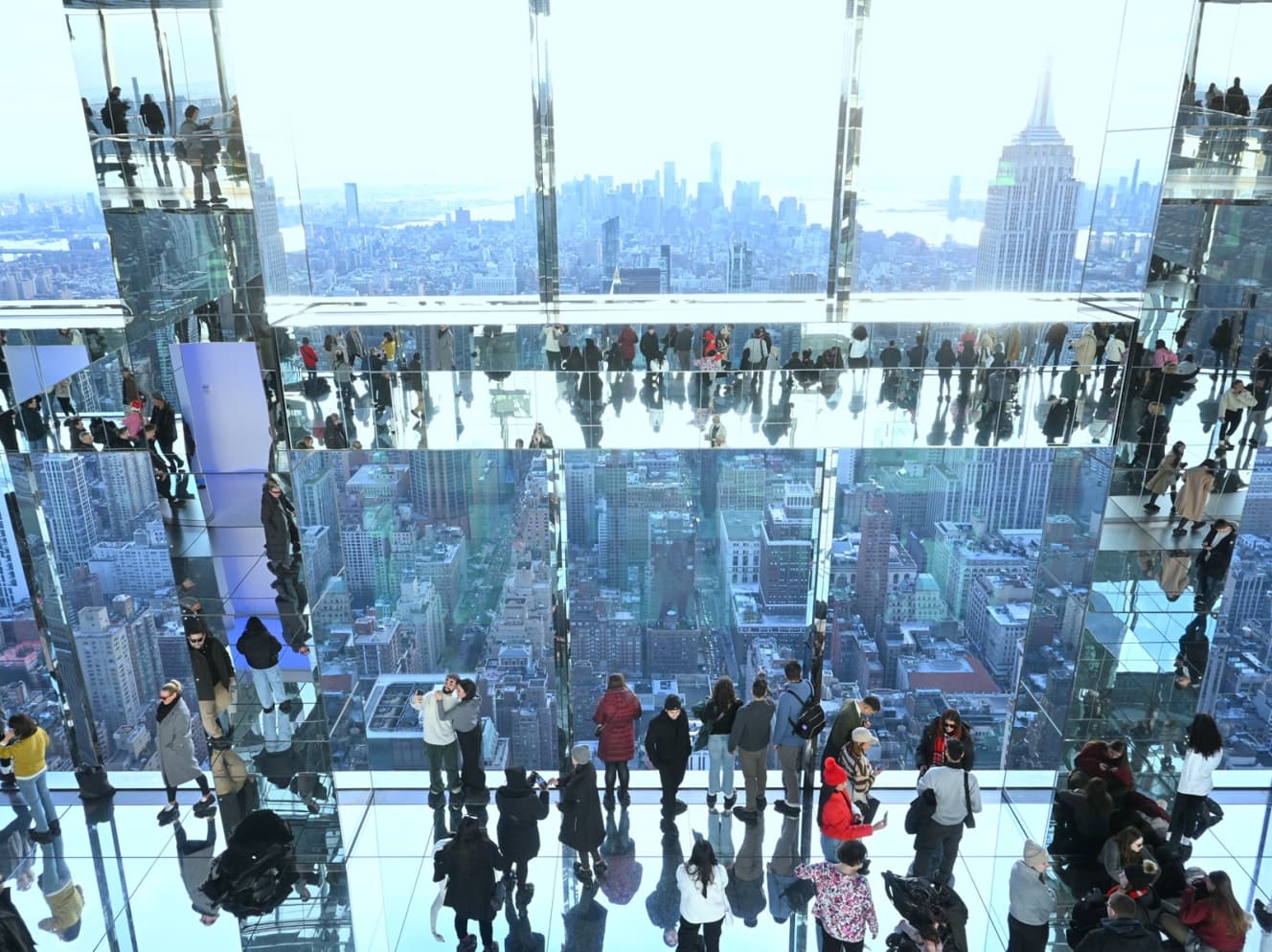
While the opening of new stores continues, New York brands popular in Japan are closing one after another.
The High Line, an abandoned elevated railroad line that was converted into a park, will be extended to Hudson Yards in March 2007. Hudson Yards is the last large-scale redevelopment project in Manhattan, and the Mitsui Fudosan Group has been working on it for some time. I had a feeling that the area would become even more attractive in the future.
In Manhattan, three new observation decks have opened in the past decade, including the Summit. The Edge, located in Hudson Yards, offers a real sense of floating with its 100th floor jutting out in a triangle shape, and the City Climb, which climbs the outer wall of the building, is a thrilling experience. In New York City, the trend is to offer more than just a view of skyscrapers from observation decks. Little Island,” a floating park that opened in Hudson River Park in 2009, is a small island in the Hudson River that is popular for its observation deck and amphitheater.
While novelty comes and goes in spurts, it also goes out of fashion quickly. The City Bakery, a New York bakery with more than 30 stores in Japan, closed its doors in 2007 due to financial difficulties. The luxury grocery store Dean & Deluca also closed its flagship store in New York for the same reason. The number of closures of high-end department stores and restaurants also increased rapidly around Corona.
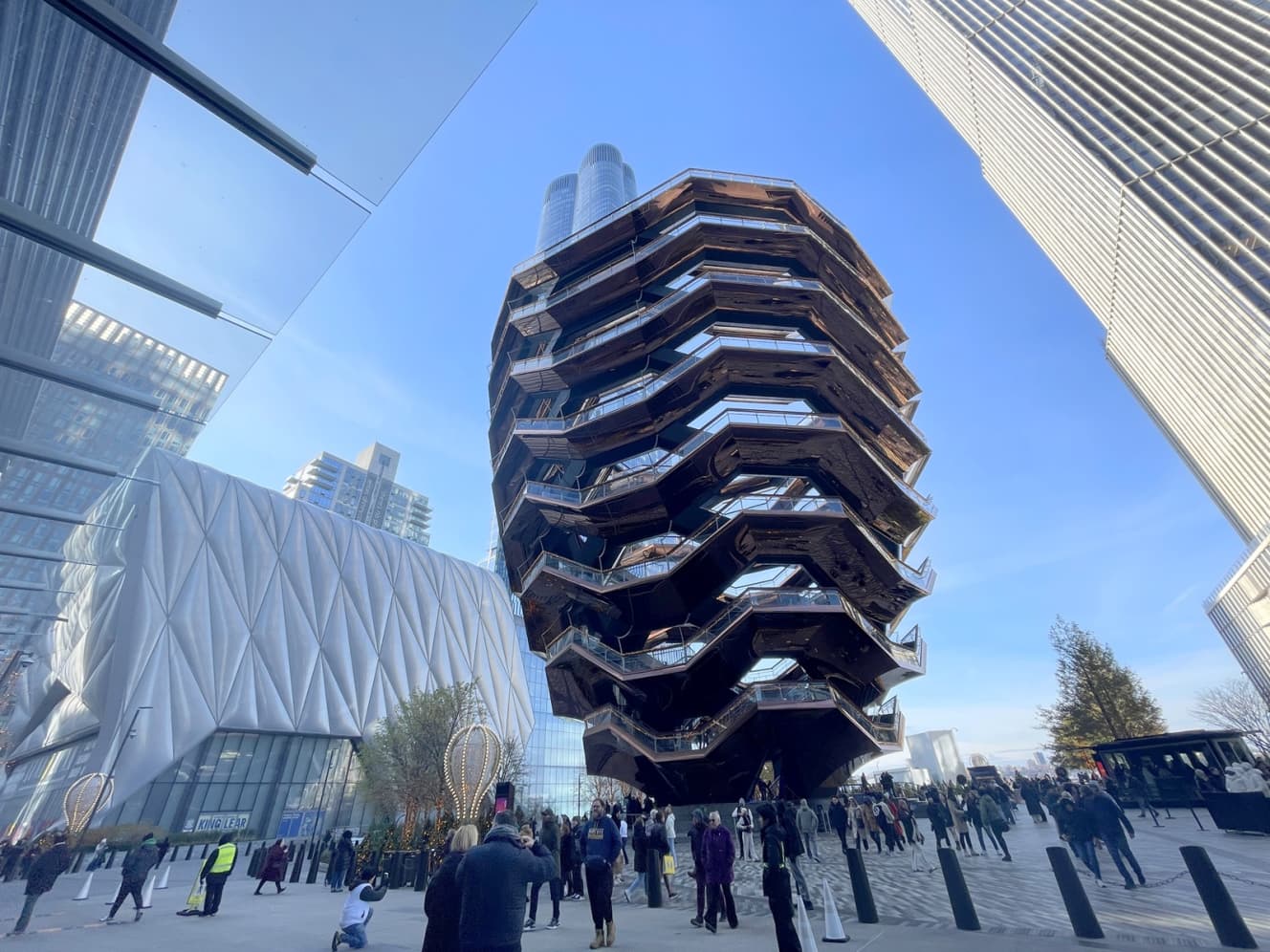
Touch payment” and “in-app purchase” are becoming popular for transit tickets.
In New York City, “touch payment” is now the mainstream method of fare payment for subways and buses. The standard MetroCard is not available until ’24, and I often saw notices urging people to register for OMNY, a contactless payment system. A system had been established whereby if you registered your credit card with OMNY and used it, you would not be charged more than $34 (about ¥5,400) in seven days, automatically allowing you unlimited rides, so to speak.
Transportation access from John F. Kennedy (JFK) Airport to Manhattan has also improved in recent years. From each terminal, passengers can take the Airtrain to Jamaica Station and then take the LIRR (Long Island Rail Road) directly to Grand Central Station or Penn Station, which together take about 30 minutes. For the Airtrain, tickets can be purchased via OMNY touch payment, and for the LIRR, tickets can be purchased via the official “MTA” app, and simply present the QR code to the conductor at the ticket inspection.
The process of purchasing train tickets in the app and presenting the QR code will be widely used before Corona, not only in the U.S. but also in other developed countries such as Europe. If you are accustomed to traveling, this system is stress-free and easy to use.
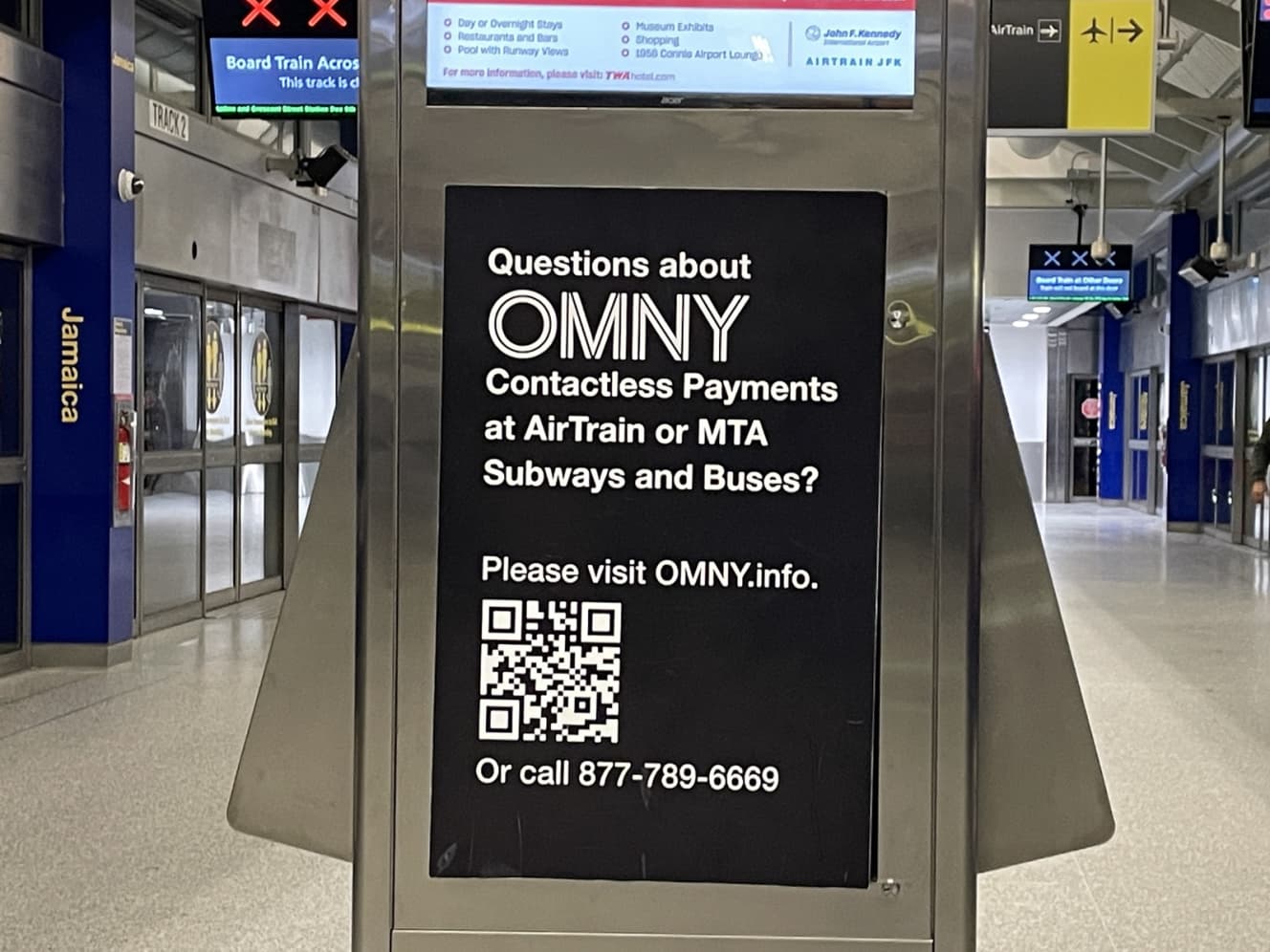
Japanese Food Boom: Grilled Fish Set Meal Sells for Over 20,000 Yen “Even If It’s Expensive, It Sells
New York attracts all kinds of cuisines and top chefs from around the world and offers a wide variety of fast food, cafes, and fine dining restaurants, but eating out is extremely expensive. Even so, it is extremely difficult to get a reservation at popular restaurants for lunch or dinner.
The popularity of Japanese food is also strong. Many Japanese restaurants are located in New York City, including the high-end Japanese restaurant “NOBU,” which operates around the world, as well as the familiar Japanese chains “Otoya,” “Ichiran,” and “Ippudo.
CIBONE Brooklyn, which opened in September 2010, is a life editorial store that also has locations in Omotesando and Ginza in Tokyo. When I visited the store this time, the interior was very busy, and I especially noticed people enjoying set menus at “HOUSE Brooklyn,” a French-Japanese restaurant that resembles a food court. Prices ranged from $35 for Yakijake (grilled salmon) to $150 for the most expensive Benihitomi (Tsushima nodoguro). Even though the fish for the main dish is ordered from the Toyosu Market in Tokyo, the prices are still astonishing to Japanese diners.
I was also surprised to find that the “Unmatched Fermented Butter Baum” (price in Japan: 180 yen including tax), which is also sold at MUJI and Lawson, was sold in the exact same package at MUJI in New York for $4.90 (about 770 yen, tax not included). In other words, if you want to enjoy the real taste of Japan in New York, it must be the price and value of the product. I could understand why inbound tourists are rushing to Japan in droves.
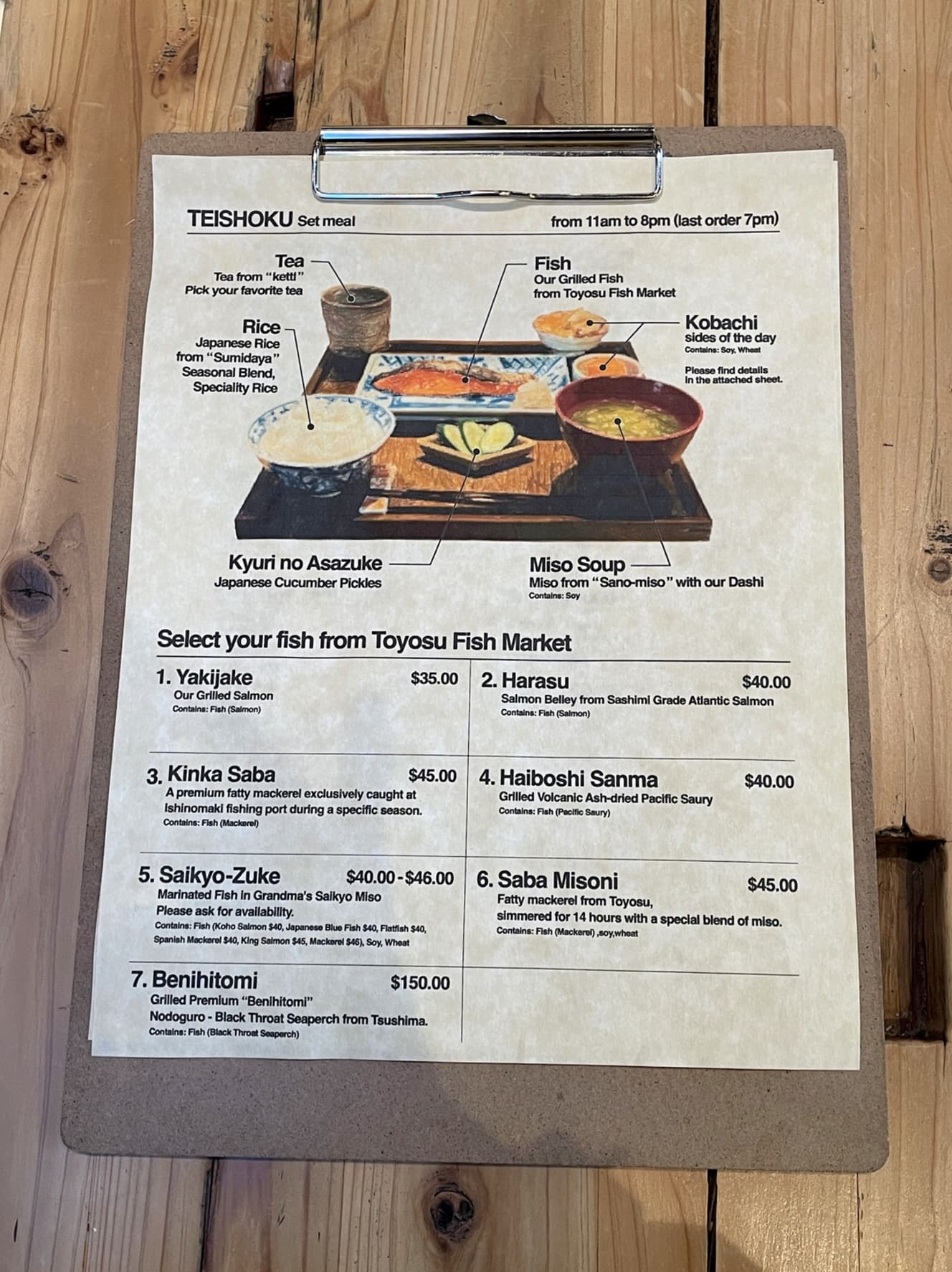
Why “Don’t Expect to Pay” for the World’s Most Expensive Hotel
The “hotel” problem is now the biggest concern for travelers in New York City. The New York Times and other media reported at the time that the average hotel price per night in New York in September 2012 was $417 (about 65,000 yen), a record high, according to the CoStar Group, an American research firm.
In particular, December, the most expensive month of the year for hotels, when the author visited, saw prices in the 3- to 4-star class jump to over $500 (78,000 yen) per night and as high as $700 (110,000 yen) per night on weekends. Prices soared across the board in Manhattan, Brooklyn, and places near Manhattan Island in New Jersey, and even dormitories were close to 20,000 yen per night. Furthermore, a 14.75% hotel tax and a 3.5-7.5% city tax are added to this amount per night per room.
When I stayed at the four-star TWA Hotel at JFK Airport this time, I paid $571 per night including all taxes, which is great if you like airplanes in a retro hotel with a 1960s atmosphere, but not so great if you stay only for lodging. The room size of about 30 square meters was quite cramped for two people. The refrigerator was empty, there was no free mineral water, and there was no hot water kettle. The carpet on the floor was threadbare, the bed sheets had holes if you looked closely, and bathroom amenities were minimal. Breakfast was an extra charge, and bottles of water (500 ml) were sold at the hotel and airport kiosks for $4 (about 630 yen).
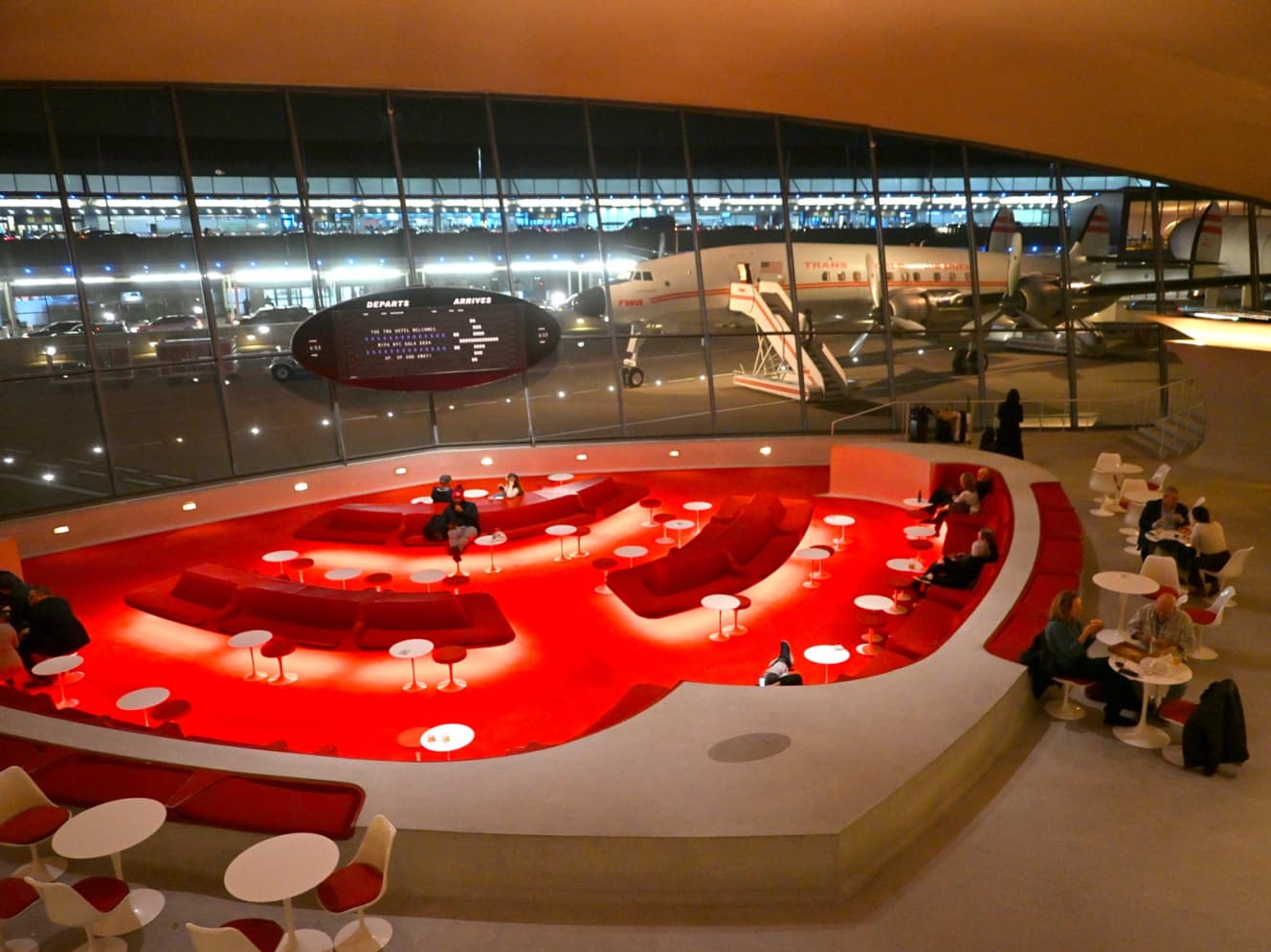
While New York City continues to be a world-class tourist destination, Japan’s future…
This time, I used a U.S. airline for my flight from Haneda to New York. Although I could see available seats on the web until the day of departure, in the end, the flight departed without a single seat available, with a 100% boarding rate. When asked about it on the plane, I was told that flights to Japan are very popular these days due to “standby” and that if there were any available seats, they would be filled. Standby” is a benefit program for airline employees and their families that allows them to board on the day of departure if seats are available. Conversely, on the return trip, on a Japanese-affiliated airline, business class and premium economy were almost fully booked, but the center of three seats in economy class were almost empty.
Inbound travelers are impressed by Japan’s traditions, culture, and beautiful scenery, as well as the country’s safety, punctuality of transportation, and high quality service. However, the “quality” of inbound travel has been declining due to the depreciation of the yen, and issues such as overtourism (tourism pollution) and bad manners have recently become a topic of discussion at every opportunity. Japan is currently experiencing a rush of foreign-affiliated luxury hotels opening for business, but there is no sense of momentum for new challenges, and a sense of stagnation among the Japanese people is evident in the rush to raise prices and the high burden of social insurance premiums.
New York used to be notorious for its high crime rate, but the crime rate has dramatically improved over the past decade or so. However, due to the COVID-19 crisis and the subsequent economic downturn, the number of empty storefronts in the city has increased again, the number of homeless people has increased, and crimes committed by immigrants and other groups have continued to increase. Recently, a murder occurred in the New York City subway system in which a passenger was set on fire and killed. Even though the local economy is enriched by the increase in the number of travelers, low-income locals and immigrants are frustrated when they do not receive the benefits of the increase in travelers. As the economic disparity widens, public safety will surely worsen.
Nevertheless, the number of visitors to New York City is not likely to decrease in the future. A vibrant and evolving tourist city will continue to attract visitors.
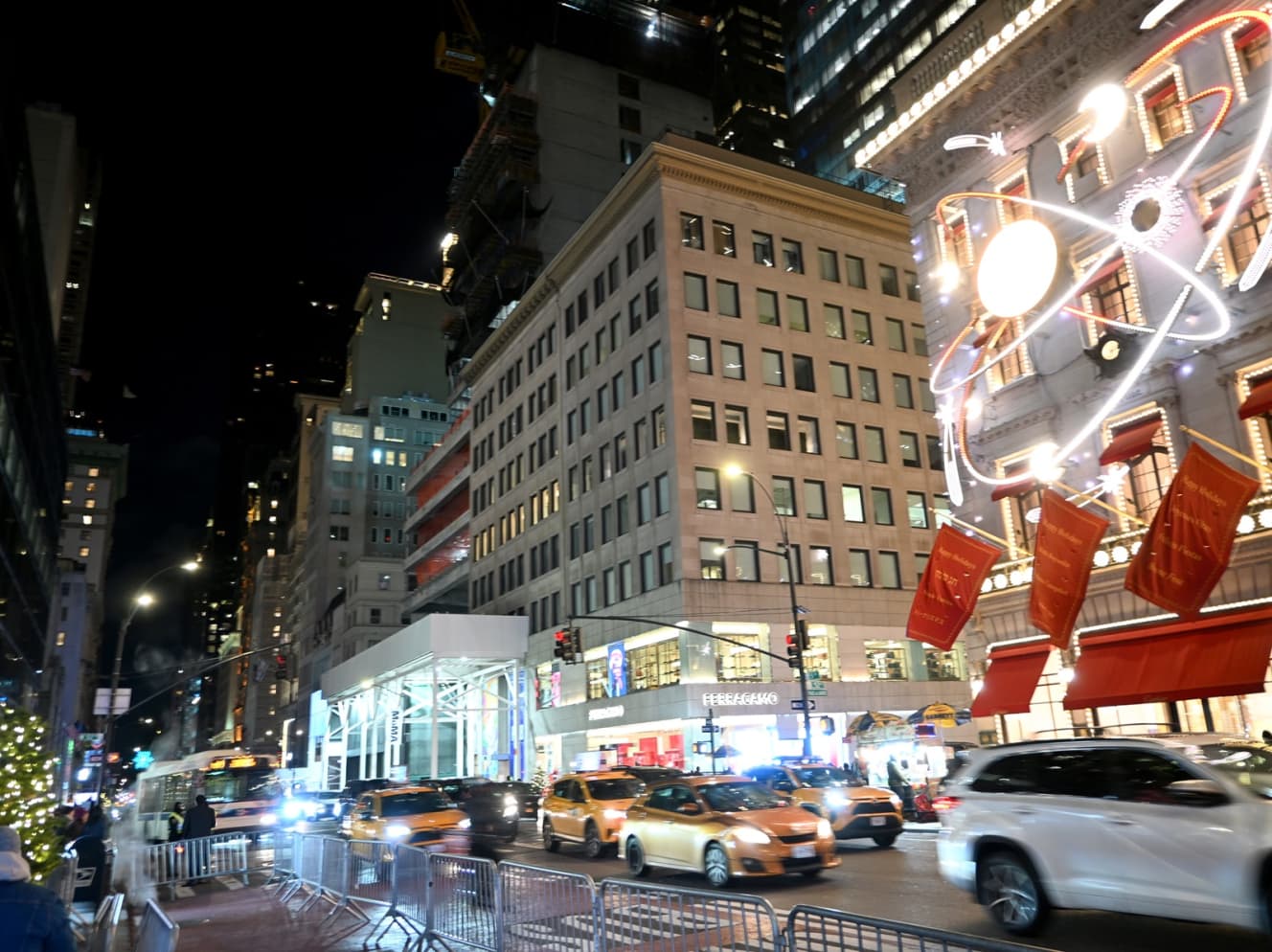
Interview, text, and photos: Aki Shikama